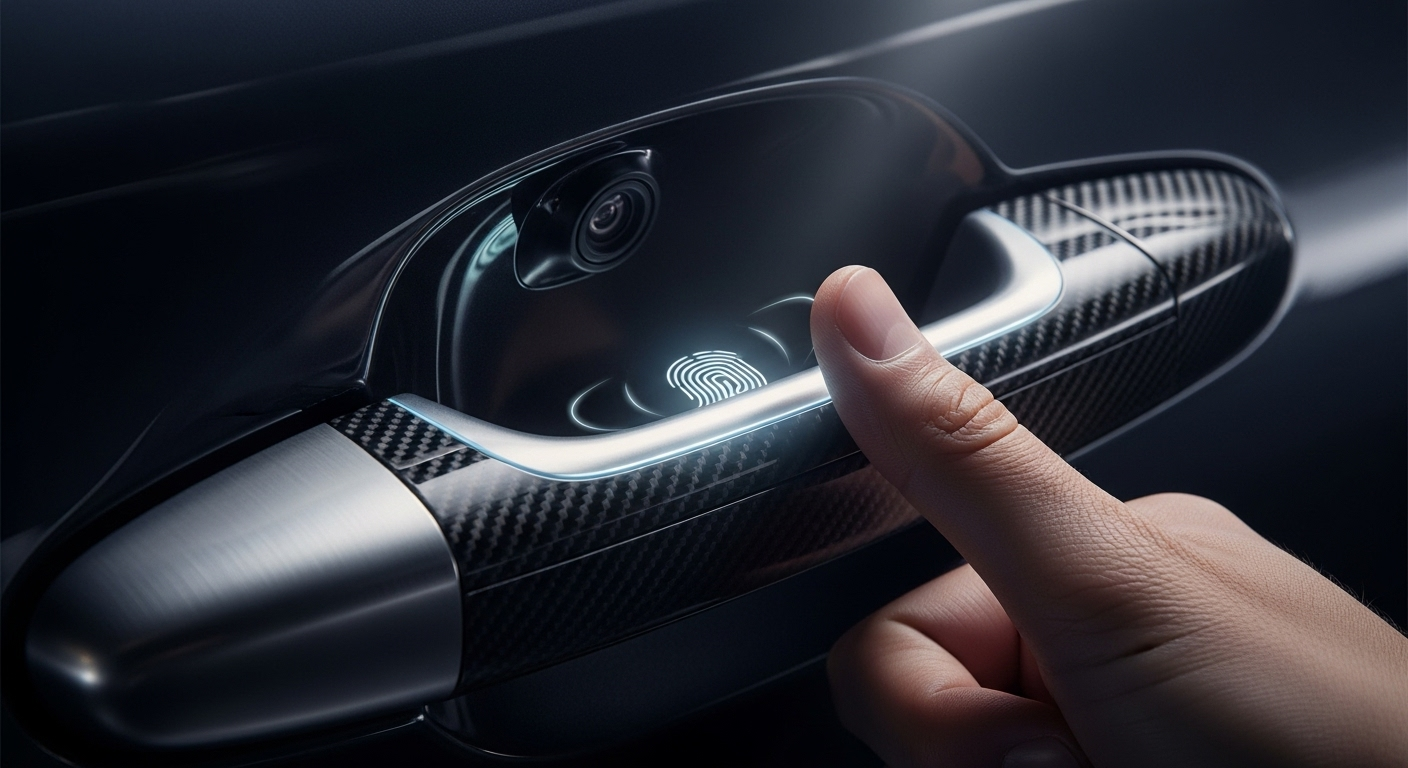The Rise of Biometric Security in Modern Vehicles
Imagine stepping into your car, placing your hand on the steering wheel, and the engine roars to life – no key required. As you adjust the side mirror, a tiny camera scans your retina, unlocking personalized settings from seat position to climate control. This isn't science fiction; it's the cutting-edge world of automotive biometric security. In an era where our smartphones recognize our faces and fingerprints, the automotive industry is leveraging similar technology to revolutionize vehicle access, personalization, and theft prevention. Let's dive into this fascinating fusion of biology and automotive engineering.

Biometrics: The Next Frontier
Biometric security in vehicles represents a quantum leap forward. Unlike traditional methods that rely on what you have (a key) or what you know (a PIN), biometrics are based on who you are – unique physical characteristics that can’t be easily replicated or stolen. This shift not only enhances security but also opens up new possibilities for personalization and user experience.
Fingerprint Recognition: The Gateway Biometric
Fingerprint sensors are often the first biometric technology implemented in vehicles due to their familiarity and relative simplicity. High-end models from manufacturers like Hyundai and Mercedes-Benz have already incorporated fingerprint readers for starting the engine and accessing personalized driver profiles. This technology allows for quick, secure access and can even adjust seat positions, mirror angles, and climate settings based on the identified driver.
Facial Recognition: Beyond Unlocking
Facial recognition technology in cars goes beyond mere entry systems. Advanced cameras can monitor driver alertness, detecting signs of fatigue or distraction. Some systems can even recognize emotions, adjusting ambient lighting or music to improve the driver’s mood. Privacy concerns aside, this technology has the potential to significantly enhance road safety by intervening when a driver’s attention wavers.
Voice Recognition: The Hands-Free Solution
While not strictly a physical biometric, voice recognition is becoming increasingly sophisticated in automotive applications. Advanced natural language processing allows drivers to control various vehicle functions, from navigation to climate control, using voice commands. More importantly, voice recognition can be used as an additional layer of security, verifying the driver’s identity before allowing certain operations.
Retinal Scanning: The Future of Ultra-Secure Vehicles
Though currently in the experimental stages for automotive use, retinal scanning represents the pinnacle of biometric security. Each person’s retinal pattern is unique and extremely difficult to replicate, making it one of the most secure forms of identification. Imagine a car that only starts after verifying the driver’s retinal scan – it would be virtually theft-proof.
The Challenges of Automotive Biometrics
While the potential of biometric security in vehicles is immense, it’s not without challenges. Privacy concerns top the list, with questions about data storage and potential misuse of biometric information. There are also practical considerations: how does the system handle authorized borrowers or valet services? What happens in emergencies if the registered user is incapacitated?
Reliability and Environmental Factors
Automotive environments present unique challenges for biometric systems. Extreme temperatures, vibrations, and varying lighting conditions can all affect the reliability of sensors. Engineers must develop robust systems that can function accurately in a wide range of conditions, from scorching desert heat to freezing arctic temperatures.
The Road Ahead: Integration and Innovation
As biometric technology in vehicles matures, we can expect to see more seamless integration with other vehicle systems. Imagine a car that not only recognizes you but also syncs with your calendar, suggesting routes based on your schedule, or adjusting the suspension based on your driving preferences. The possibilities for personalization are endless.
A New Era of Automotive Security and Personalization
Biometric security in vehicles represents more than just an evolution in anti-theft technology; it’s a paradigm shift in how we interact with our cars. As these systems become more sophisticated and widespread, they promise to make our vehicles not just more secure, but more intuitive and personalized than ever before. While challenges remain, the potential benefits in terms of security, convenience, and user experience are immense. As we move forward, the line between driver and vehicle will continue to blur, creating a symbiotic relationship that enhances both safety and enjoyment on the road.





